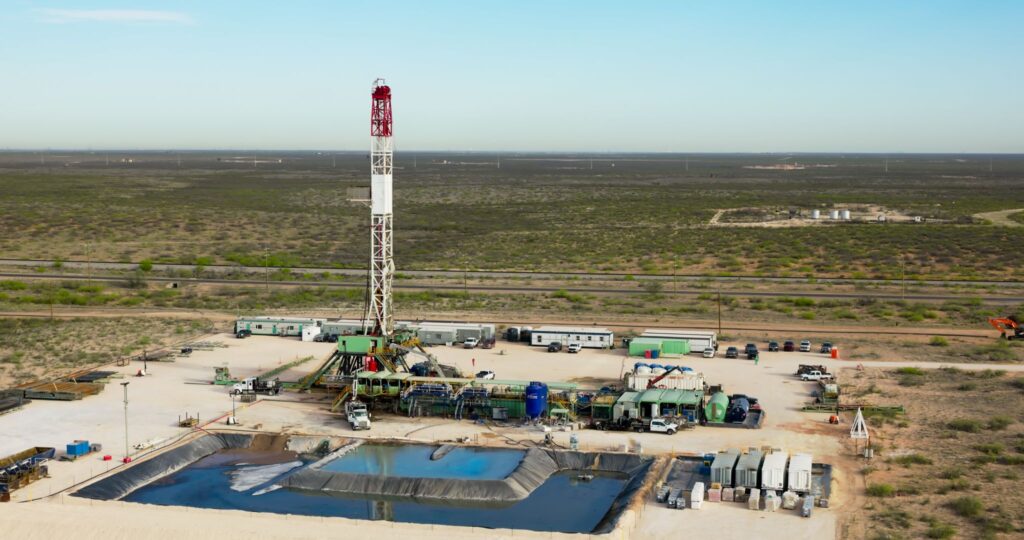By Campbell Gough, Product Manager, B3 Insight
The Texas Railroad Commission’s latest regulatory overhaul marks a seismic shift in how injection well permits are evaluated and approved in the Permian Basin. At the heart of this change lies a fundamental recognition: historical rules based on outdated operating environments can no longer safeguard the region’s evolving subsurface realities.
Effective June 1, 2025, permitting process for saltwater disposal wells (SWDs) across the Permian Basin—specifically within Districts 7C, 8, and 8A will significantly change. These revised guidelines affect both shallow and deep disposal well applications, whether new or amended, and are intended to address mounting geotechnical and seismicity-related challenges that have emerged in the basin over the past decade.
Background: Why Now?
The regulatory framework for SWDs in Texas has remained largely unchanged since 1982. In the intervening four decades, injection practices have shifted dramatically—both in scale and in impact. Injection volumes have increased by orders of magnitude, leading to significantly higher formation pressures in shallow injection intervals. Horizontal drilling and hydraulic fracturing have also expanded rapidly, escalating the volume of produced water requiring disposal.
These changes have not occurred in isolation. Beginning in the early 2010s, increased seismicity across West Texas—particularly in the Delaware Basin—has been closely correlated with deep disposal operations. In response, the RRC is now taking a more assertive regulatory posture, aiming to mitigate induced seismicity and protect the mechanical integrity of subsurface formations.
5 Key Technical Changes in the RRC’s New Permitting Guidelines
1. Expanded Area of Review (AOR):
- The AOR has been extended from 0.25 miles to a dual-buffer of 0.5 and 2 miles, reflecting the modern understanding of pressure diffusion in produced water receiving formations.
- Operators must identify and evaluate all wellbore penetrations (plugged or unplugged) within the AOR for potential conduits that could allow injected fluids to migrate out of the injection zone.
2. Fracture Containment Requirements:
- Applications must now demonstrate that proposed surface injection pressures will remain will not cause formation pressures to exceed the fracture gradient of the confining strata.
- Both the injection interval and top and bottom confining strata must be proven competent. If cement or logging records are incomplete or absent for wellbore penetrations within the AOR, the RRC will presume containment risk.
3. Pressure-Based Volume Restrictions:
- Daily injection volumes will be tiered based on reservoir pressure gradients. For example, disposal zones with elevated pressure gradients (≥0.7 psi/ft) may be limited to maximum daily volumes of 10,000 barrels.
- The Texas RRC now includes a constraint on the maximum instantaneous injection rate (MIR). This ensures consistent injection volumes throughout the day.
- These limits are designed to reduce pressure buildup and prevent fluid migration out of zone.
4. Two-Mile Risk Buffer and MSIP Penalty:
- The RRC introduces a new “subject area” extending from 0.5 to 2.0 miles around the proposed SWD.
- If any well in this buffer is classified as an orphan well or lacks sufficient cementation or completion documentation, the Maximum Surface Injection Pressure (MSIP) will be automatically reduced by 0.05 psi/ft, regardless of how many non-compliant wells are found.
- No tolerance for orphan wells, improperly plugged wells or inadequately cemented penetrations through the injection zone inside the 0.5 mile AOR.
5. Engineering and Geoscience Certification:
- All applications must include a cross-section, geological map, and an integrated AOR and well template—each sealed by a licensed professional engineer (P.E.) or professional geoscientist (P.G.).
- The RRC has released a structured Excel-based workbook (UIC Permian Pressure Review V1.0) to standardize application inputs and streamline reviews.
Data Expectations and Regulatory Collaboration
During a recent technical webinar hosted by the RRC, staff acknowledged the inherent uncertainty in pre-drill applications. Still, applicants are expected to source the most relevant and recent offset data—whether from public RRC records, private databases, or well logs from adjacent operators. If reliable data cannot be obtained, the applicant should explicitly state this in the submission rather than default to unsubstantiated estimates.
Importantly, the RRC encourages operators to schedule pre-application meetings to clarify data requirements and pressure modeling expectations. This cooperative posture signals the agency’s recognition of the complexity involved—and its preference for early technical engagement over reactive enforcement.
Operational Implications
These guidelines raise the bar for SWD design, planning, and regulatory compliance. While some may view the requirements as onerous, they are designed to avert operational disruptions like the May 2025 suspension of all deep disposal permits in the Northern Culberson-Reeves Seismic Response Area (SRA) following a magnitude 5.4 earthquake.
By proactively addressing pressure buildup and legacy well risks, the guidelines represent a pivot from reaction to prevention—aligned with geomechanical realities and basin-scale risk management.
For operators, planners, and geoscientists working in the Permian, these changes underscore the necessity of robust subsurface characterization, sound injection modeling, and cross-disciplinary collaboration. Disposal strategy is no longer an afterthought—it is central to long-term production viability in West Texas.
As regulatory frameworks evolve alongside geological understanding, the industry must match this shift with technical rigor and operational foresight.
The Texas Railroad Commission’s latest regulatory overhaul marks a seismic shift in how injection well permits are evaluated and approved in the Permian Basin. At the heart of this change lies a fundamental recognition: historical rules based on outdated operating environments can no longer safeguard the region’s evolving subsurface realities.
These new rules do more than raise the bar for technical rigor—they redefine the expectations for risk management, geomechanical understanding, and long-term basin planning.
Related Products: Oilfield H2O | Subsurface Injection Pressure

